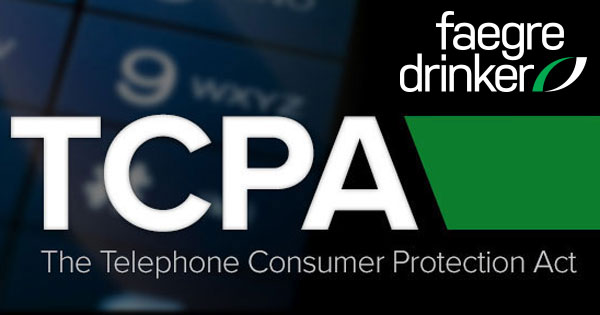Recently, the Eastern District of Michigan granted a motion for summary judgment in Gary v. Trueblue, Inc., No. 17-10544, 2018 U.S. Dist. LEXIS 175021 (E.D. Mich. Oct. 11, 2018), after finding that a plaintiff failed to show that defendants’ telephone dialing system qualified as an ATDS under the statute’s plain language. This decision adds to the growing list of cases applying the plain language of the statute in the wake of ACA International.
In Gary, plaintiff Kevin Gary sued the defendant, Trueblue, Inc. (a blue-collar staffing company doing business as “Labor Ready”) after Gary allegedly received over one-thousand text messages alerting him to job openings. Despite signing a form that stated “I give Labor Ready my express permission and consent to call my phone number that I provided on my employment application for the sole purpose of alerting me to new job opportunities at Labor Ready,” Gary claimed that the texts were sent via an ATDS without his consent (with the court noting that while the record did show that the plaintiff requested the texts to stop at times, he also opted back in afterwards).
Defendant moved for summary judgment and raised four arguments. The court deemed one of those arguments dispositive (whether the defendant’s system for sending texts qualified as an ATDS under the plain language of the TCPA) and granted the motion.
As an initial matter, the court looked to procedural history of the D.C. Circuit’s decision in ACA International. It noted that because the Sixth Circuit had already held in Sandusky Wellness Center that the MDL consolidation in the D.C. Circuit of the Bais Yaakov TCPA fax appeal made the D.C. Circuit’s decision in that case binding nationwide, the same would hold true regarding the ACA International decision.
The court then noted that as a result, it “need not defer to the FCC’s understanding of the capacity and functions of an autodialer under the TCPA” (id. at *7-8), and that because “there ha[d] been no Sixth Circuit case law interpreting the definition of an autodialer” since ACA International, the court was required to “look to the plain language of the statute to resolve” defendants’ motion. Id. at *8. That meant that to be an ATDS, Labor Ready must have used “a piece of equipment [with] the capacity to (1) store or produce telephone numbers to be called, using a random or sequential number generator, and (2) dial such numbers.” Id. at *10. The court concluded that under that definition, Labor Ready could not be liable.
The record showed that in order to send messages through Labor Ready’s messaging platform, a worker needed to take the following steps: (1) “manually open the . . . web browser application on their desktop computer and enter their log-in credentials;” (2) “input criteria to search for potential workers;” (3) “hit[] the ‘search’ button, which returns a list of potential workers;” and (4) “manually compose a text message that will go out to the workers who have opted into the . . . program.” Id. at *2. Furthermore, the defendant presented an affidavit stating that its system “lacks the capability to randomly or sequentially dial or text potential workers.” Id. at *10.
In response, the plaintiff asserted that the platform was nevertheless an ATDS because it “act[ed] in conjunction with a third-party aggregator” that was itself an ATDS.
The court disagreed.
First, the court rejected plaintiff’s argument that the use of “programs such as ‘Java API, XML, and SMPP servers,’” shows that the platform was an ATDS because (i) the plaintiff’s “evidence” was taken primarily from internet sources and was insufficient and baseless, and (ii) the plaintiff had failed to name the third-party as a co-defendant or seek direct discovery from it. Id. at *11-12. Second, the court found that the platform’s ability to perform some functions (such as sending automated opt-out messages) without human intervention did not mean that the platform was an ATDS because “the plain language of the TCPA does not prohibit the use of devices with automated functions;” rather, “the statute requires a showing that the system has the capacity to randomly or sequentially dial or text phone numbers,” and plaintiff did not show that defendants’ system had such capacity. Id. at *14. Third, the court held that the defendants’ use of a “web-based messaging platform [did] not automatically violate the statute” because there was “no evidence in the record showing” the system at issue had the capacity “to use a random or sequential number generator.” Id. at *17.

